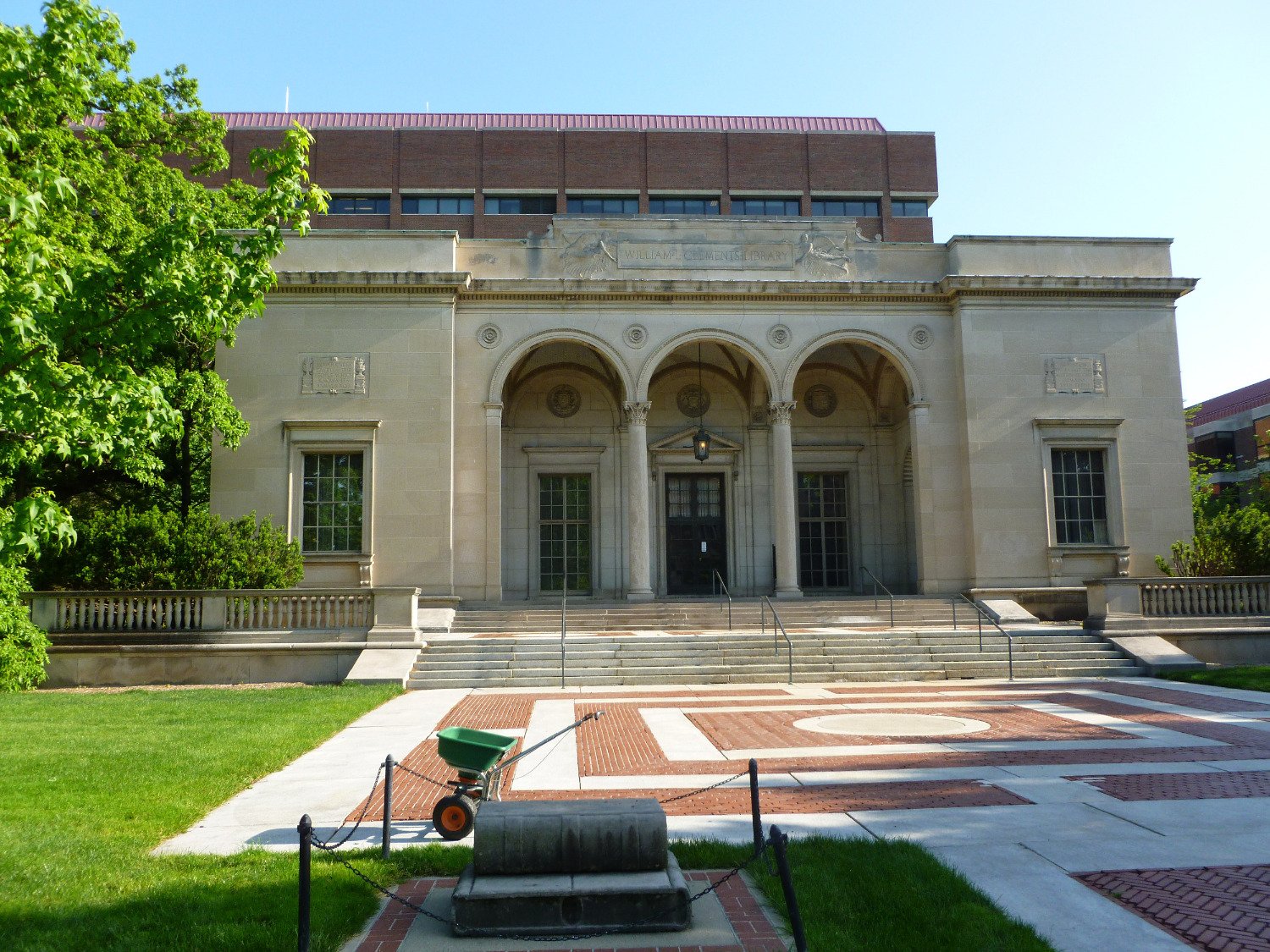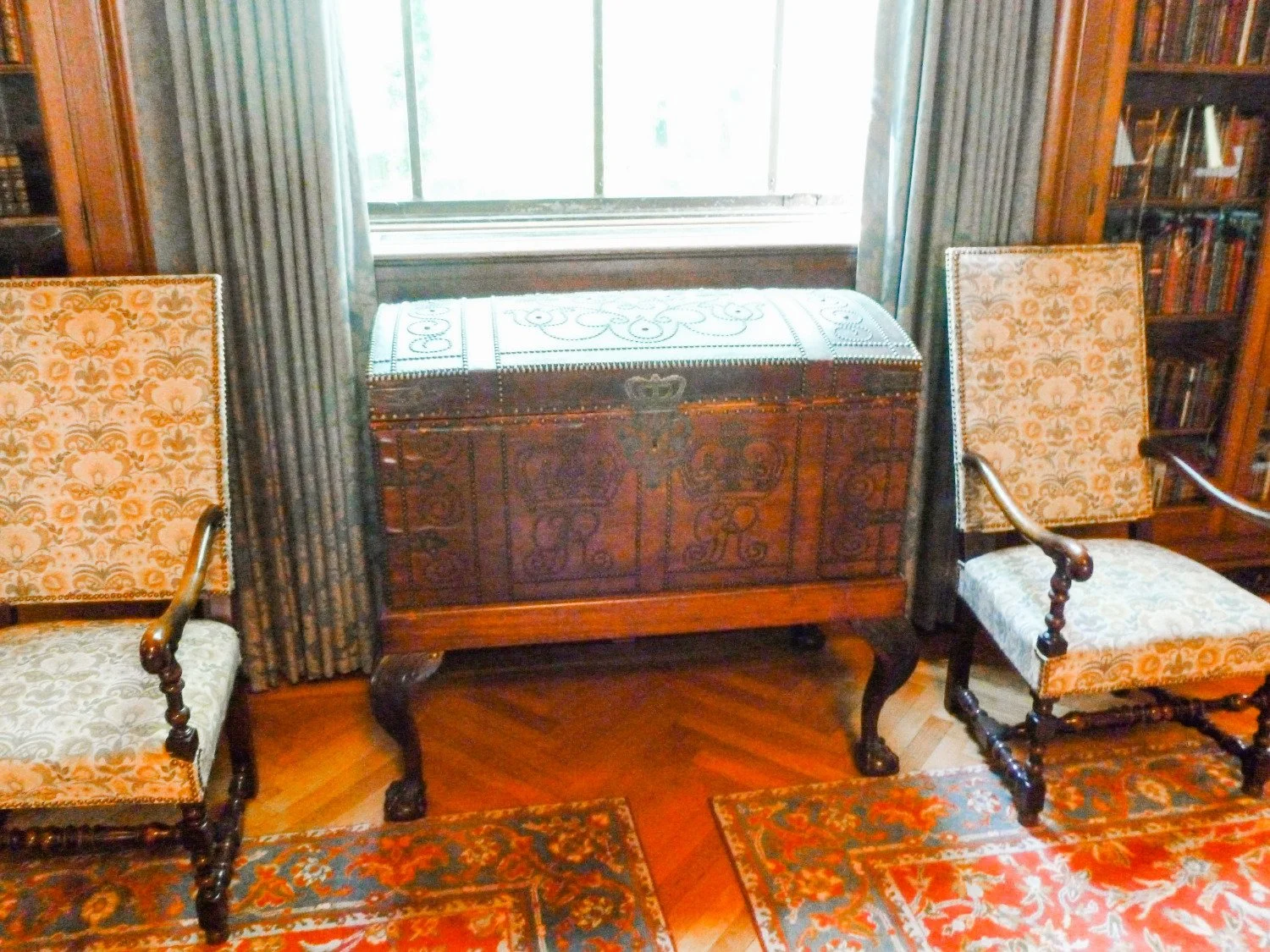Historical Research at the William L. Clements Library in Ann Arbor
One the best places to do historical research is the William L. Clements Library on the campus of the University of Michigan in Ann Arbor.
It is a top destination for researchers interested in early American history and Native American history.
Its collections are vast and valuable. Many of its manuscripts have never been printed or microfilmed. It also has thousands of rare books and manuscript maps, and the library is a beautiful building.
I find that place exciting. You might think only a researcher and bookworm like me would, but read a little further and the less history-minded people may understand why I can’t wait to go back.
I visited the Clements multiple times in the 2010s, before and after it underwent a major transition. The outside of the library, a 1920s-era limestone structure in the Italian renaissance style, looked the same to me before and after.
The inside was transformed. In April 2016, the reading room inside relocated to the magnificent top floor, which had been an exhibit space the first time I visited.
It’s dark inside, but very cozy (photo below from the Clements Library’s website; all other photos by me).
Getting materials to work with is a breeze, and there’s a lot to see. I’ve worked most with the Thomas Gage papers and the William Henry Lyttelton papers. Also of interest were the papers of William Petty, 2nd Earl of Shelburne, the papers of British general Sir Henry Clinton, and other collections.
When the library is open, on Fridays, the public can visit and see exhibits and artifacts that rotate on display. I saw curious rare books, a piece of furniture made, I think, by a relative of Abraham Lincoln, a clock that had been in Hasbrouck House (General George Washington’s headquarters in Newburgh during the Revolutionary War) and was later owned by historian Carl Van Doren, and an ornately decorated trunk owned by Sir Henry Clinton (shown in photo).
They have a tradition where researchers are invited to join staff for morning tea. I liked the conversations over shared interests, the impromptu history lessons, the connections shared, and the introductions made. It made the experience all the more enjoyable.
The staff and the curators’ knowledge of the history of the library and the scope and provenance of its collections is extensive, and everyone seemed pretty excited to share that knowledge with me—before, during, and after my visits.
I spent every available minute I could at the library, literally waiting outside in the mornings for the doors to unlock, and working intently until the “time to shut it down” announcement in the evenings.
I did manage to see some of campus, though. The University of Michigan is picturesque. One of my editing clients did her undergraduate work there decades ago and said it has always been that way.
I found plenty of places on campus for quick picnic lunches. If I was running early, I strolled about. I found a plaque on a nearby building that said that the University of Michigan was the first public university in America to award degrees in engineering. Coincidentally, one of its engineering alums was the architect who designed the library.
I saw a geological survey marker on campus similar to what someone would see on a mountaintop. I also saw a car with a bumper sticker that said “large black text on white background.” Everyone I told got a laugh out of that.
It is easy to get to and from the Detroit airport. The terminal was bright and airy with pretty fountains and birds flying about. But there were also some spooky subterranean tunnels that are long and dimly lit. I walked fast on the moving escalator!
On the bright side (especially for New England residents): the sun sets later in Michigan in the dead of winter than it does on the East Coast, which was a nice surprise. The flight to and from Detroit over the Great Lakes and watching the planes at the airport was pretty amazing, too.
Ann Arbor is a college town less than an hour from Detroit. The traffic was worse than I expected. Maybe because at the time I was living in Maine where the definition of a “long commute” is getting stuck for five extra minutes in the afternoon rush. Winter weather in Ann Arbor isn’t great. During my last trip there, a blizzard knocked out the power at the hotel. I thought all hotels had generators, but I guess not!
I discovered the food scene in Ann Arbor is pretty good. (For starters, there is a great café/grocery named Zingerman’s.)
I hope your research trip will be so productive and enjoyable, the food options in Ann Arbor so plentiful, that you’ll tolerate the traffic and any inclement weather and have a great time.
Do you have a favorite research destination? Have you ever been to the Clements?
Thanks for reading,



